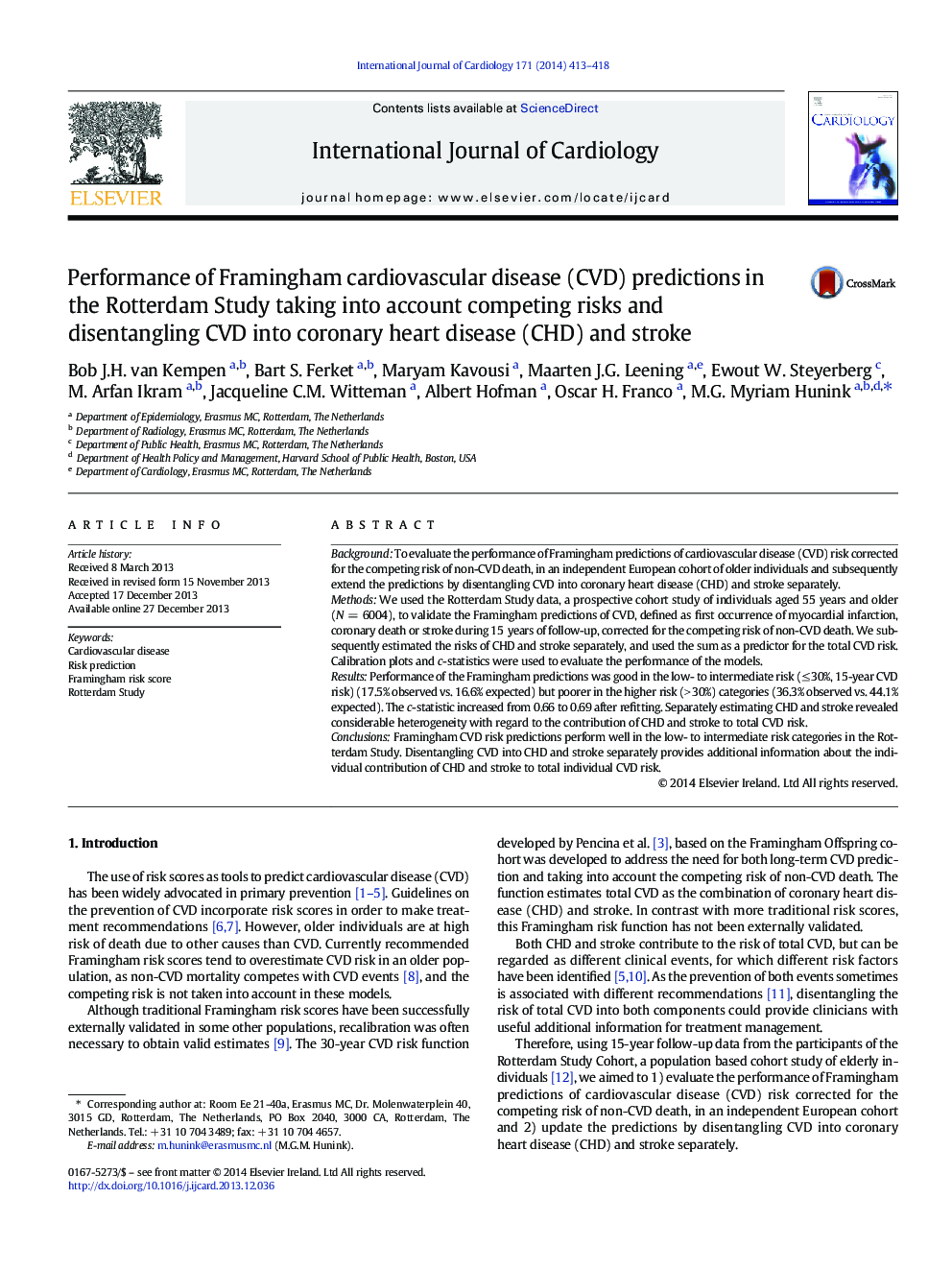| Article ID | Journal | Published Year | Pages | File Type |
|---|---|---|---|---|
| 5973083 | International Journal of Cardiology | 2014 | 6 Pages |
BackgroundTo evaluate the performance of Framingham predictions of cardiovascular disease (CVD) risk corrected for the competing risk of non-CVD death, in an independent European cohort of older individuals and subsequently extend the predictions by disentangling CVD into coronary heart disease (CHD) and stroke separately.MethodsWe used the Rotterdam Study data, a prospective cohort study of individuals aged 55 years and older (N = 6004), to validate the Framingham predictions of CVD, defined as first occurrence of myocardial infarction, coronary death or stroke during 15 years of follow-up, corrected for the competing risk of non-CVD death. We subsequently estimated the risks of CHD and stroke separately, and used the sum as a predictor for the total CVD risk. Calibration plots and c-statistics were used to evaluate the performance of the models.ResultsPerformance of the Framingham predictions was good in the low- to intermediate risk (â¤Â 30%, 15-year CVD risk) (17.5% observed vs. 16.6% expected) but poorer in the higher risk (> 30%) categories (36.3% observed vs. 44.1% expected). The c-statistic increased from 0.66 to 0.69 after refitting. Separately estimating CHD and stroke revealed considerable heterogeneity with regard to the contribution of CHD and stroke to total CVD risk.ConclusionsFramingham CVD risk predictions perform well in the low- to intermediate risk categories in the Rotterdam Study. Disentangling CVD into CHD and stroke separately provides additional information about the individual contribution of CHD and stroke to total individual CVD risk.
